September 30, 2005
You're making a mess...
Lobsters are expensive. But they are also tasty, and as an added bonus you get more "stuff" out of them. I almost always use the carcasses to make stock and butter. Unless, of course, there's been a glut of lobster eating this year and my freezer is already full.
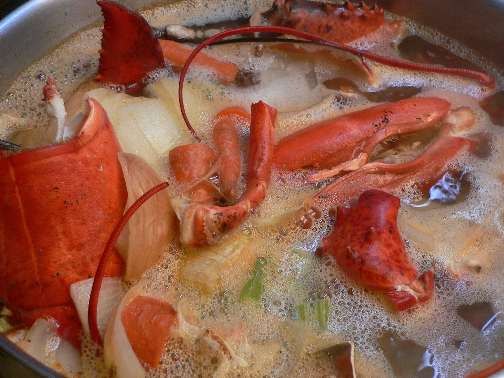
Starting of the stock
This is a basic stock. Lobsters, Veg (carrots, celery, onions), pepper corns, some thyme. I make the lobster stock basic, but later can add cooked rice, more variety of veg, and whirl down into a bisque very quickly.
After about an hour, any meat/bits/tasty parts have falled out of the shells, and so I fish out all of the shells except the crusher claws (They are too hard for butter making). I let the stock continue to cook for another hour, then strain and reduce by half.
I almost always reduce stocks that I'm going to freeze. Take up less room in the freezer, and less time when it comes to use them. I got just under 4 quarts out of this batch.
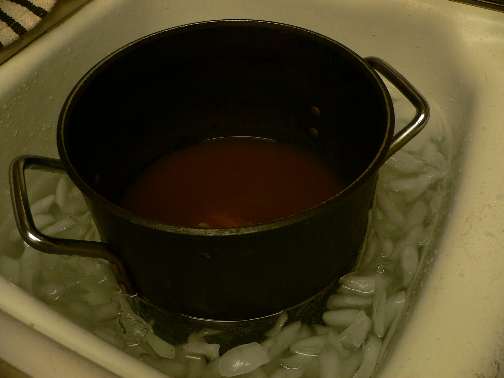
Completed and reduced stock
Now for the "fun" part. As Derrick says, lobster butter is probably one of the more creative uses of kitchen equiptment. Take your lobster shells, whack them up as best you can (rolling pin), and place them in your Kitchenaid with the paddle attachment. Add butter (in this case, two pounds of Sweet Sweet Plugra). Cover the entire operation with the towel, and turn on the lowest setting.
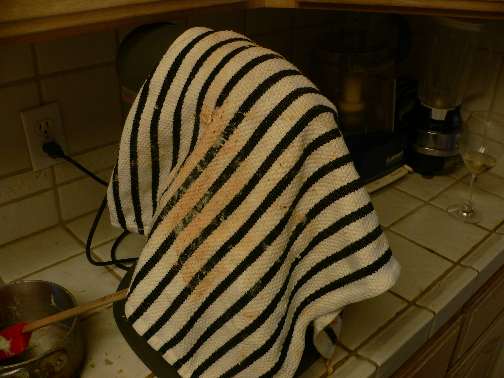
Grind the lobster covered!
Rejoice! As bits of lobster and butter and butter coated lobster try to leap out of the mixer. Keep an eye on the mixer, you may need to halt it if it jams. Eventually, things should settle down, keep grinding away until the bits don't seem to get any smaller. With larger lobsters, the pieces never do break down entirely. However, with 1.5 pounders, you usually end up with very small bits.
Oh yeah, and did I mention one unholy mess as well?
Notice that we've got butter on the towel, the outside of the mixer, the counter, and even up into the gearworks of the mixer.
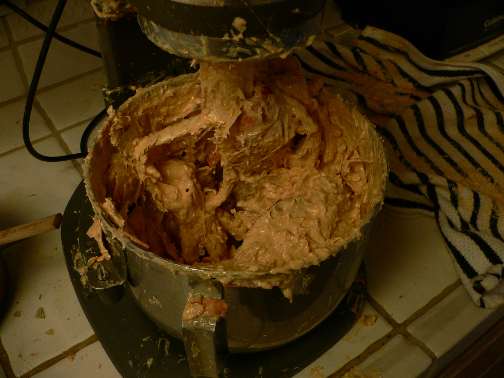
Finished butter and lobster parts
Scrape out all of the parts and bits into some sort of oven-safe cooking vessel (I use a stock pot). Start on top of the stove over medium-low heat until the butter has melted.
Transfer to a 200-225 oven, and cook for 40 minutes.
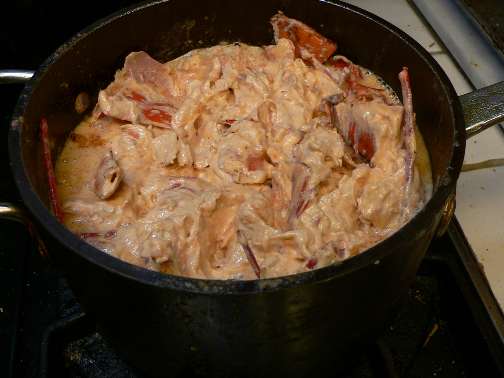
Starting to cook the butter
Check the oven from time to time. You want nothing higher than a low simmer.
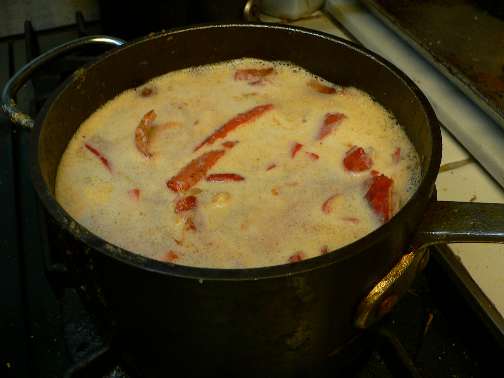
Cooking done, unstrained
Now, how are you going to get that lobster away from that butter?
Add water to the pot -- about an equal amount to the amount of butter. Return the pot to the stove and heat until you are sure everything is still plenty liquid. Then, strain the mixture through a fine sieve. If you don't have a chinois then I recommend a coarse strainer followed by a fine mesh one.
Return the strained liquid to the pot. I usually clean the sieve at this point and pass the mixture through one final time to make sure I got out any shell bits.
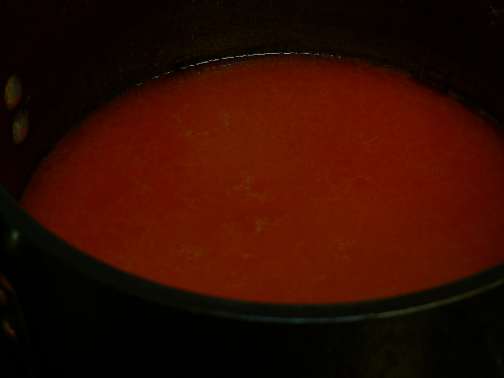
Strained lobster butter
Once strained, the bright orange color of the butter really shows up. Place the pot into the fridge overnight. The butter fat will rise to the top and solidify while the water-based liquid will be at the bottom and remain a liquid.
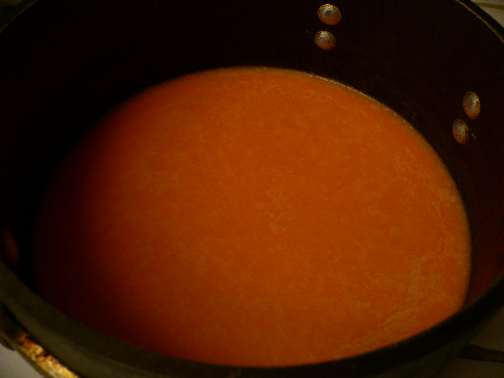
Lobster butter the next day
Using a spoon, lift and/or scrape the fat from the liquid. Dry off the bottom. And there you have it. Lobster butter. Well, technically, this would be lobster flavored butterfat. The process of separating the fat from the liquid has also removed the natural emulsifiers from the butter.
As a result of this, you cannot use this in preparations that make use of this emulsifing nature of butter (such as beurre blanc, or, uh, lobster butter cream). You can, however, mount the butter into sauces that have otherwised reduced. It also makes a great stir-in at the end of cooking risotto.
The cannonical use of lobster butter, however, is as a final stir-in when making lobster bisque. It is lobster butter, and not tomatos, that gives bisque the unique orange color. Well, if you make it correctly, that is.
Wrap well in plastic and freeze.
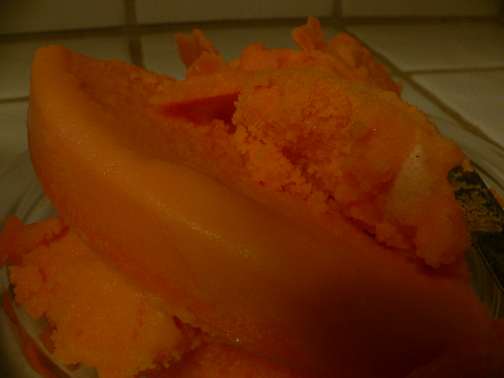
Final product ready for freezing